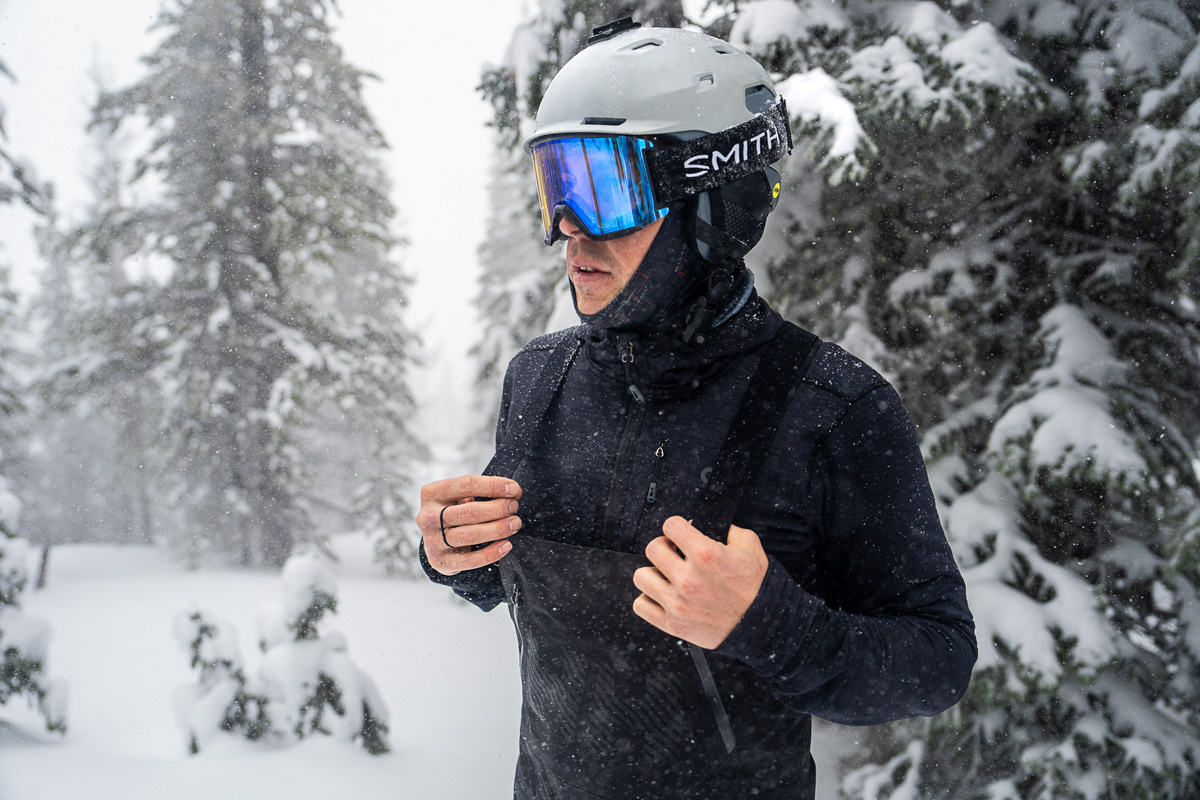
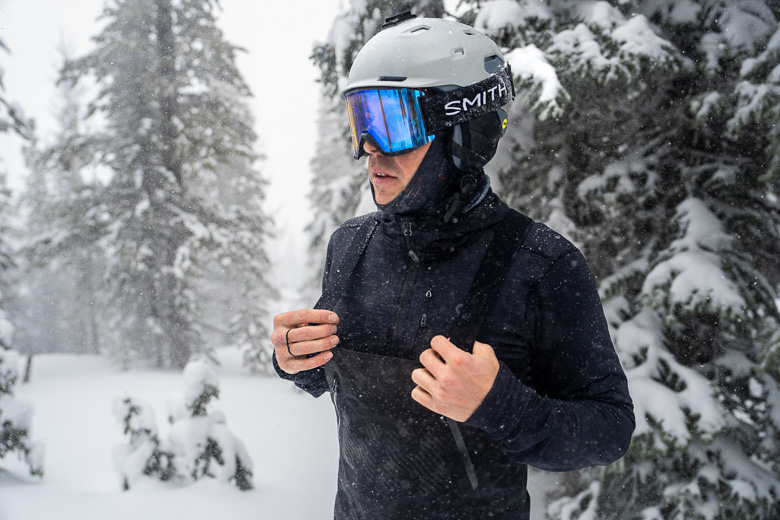
Price: $600
Weight: 1 lb. 9.0 oz.
Waterproofing: 3L Helly Tech Professional
What we like: High on wet-weather protection and durability; competitively light and stylish.
What we don’t: Not particularly wind-resistant; we experienced a couple fit and finish issues.
See the Men's HH Ridge Infinity Shell Bibs
Helly Hansen is a leader in the ski apparel market, and their Ridge Infinity kit was quick to impress us throughout a full season of testing last winter. Along with the jacket, we put the bibs through their paces in eastern Washington and came away with high praise regarding wet-weather protection and durability. Wind resistance was a little lacking (something we didn’t experience with the jacket), and we did have some fit and finish-related issues, but overall, the Ridge Infinity Shell Bibs are a quality option for mixed resort and backcountry use. Below we break down our experiences with the Ridge Infinity Bibs. To see how they stack up to the competition, check out our article on the best ski bibs. And to complete your kit, we’ve also tested and reviewed the Ridge Infinity Shell Jacket.
Boasting Helly Hansen's top-end Helly Tech Professional membrane, the Ridge Infinity Shell Bibs performed admirably in the wet conditions I encountered in eastern Washington. Combined with a durable water-repellent (DWR) coating and fully seam-sealed construction, the bibs did an excellent job repelling moisture and keeping me dry throughout the season. My only notable complaint is that the bibs didn't block wind as effectively as I expected from a premium 3-layer design. The fabric felt noticeably thinner than burlier options like Flylow Gear’s Baker Bib, which was particularly evident at Mission Ridge Resort—a ski area notorious for wind. It's worth noting that the Ridge Infinity Shell Jacket that I tested alongside the bibs performed well in blustery weather, so I was very surprised to find the bibs lacking in this department.
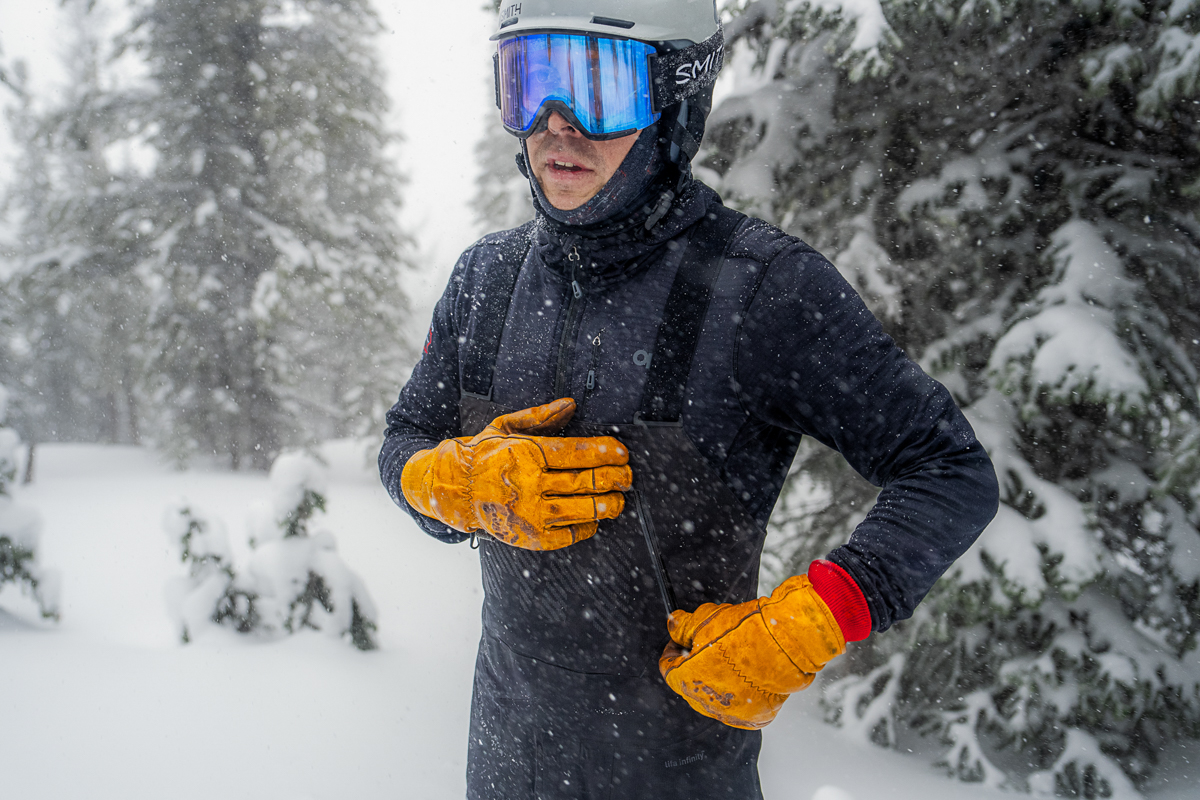
That said, I do appreciate the bibs' high level of coverage. The design extends pretty high up the chest, effectively preventing snow from sneaking in overtop, and the integrated gaiters did a great job sealing out moisture around my boots. My only concern was the cargo pocket on the left thigh, which uses a Velcro-equipped flap closure instead of a more secure zipper (more in "Key Features" below). However, despite my reservations, the pocket remained snow-free even during deep powder days. Additionally, the bibs are compatible with Helly Hansen’s powder skirts (as seen on the matching Ridge Infinity Shell Jacket that I tested) for the utmost security on deep days and in the event of a fall.
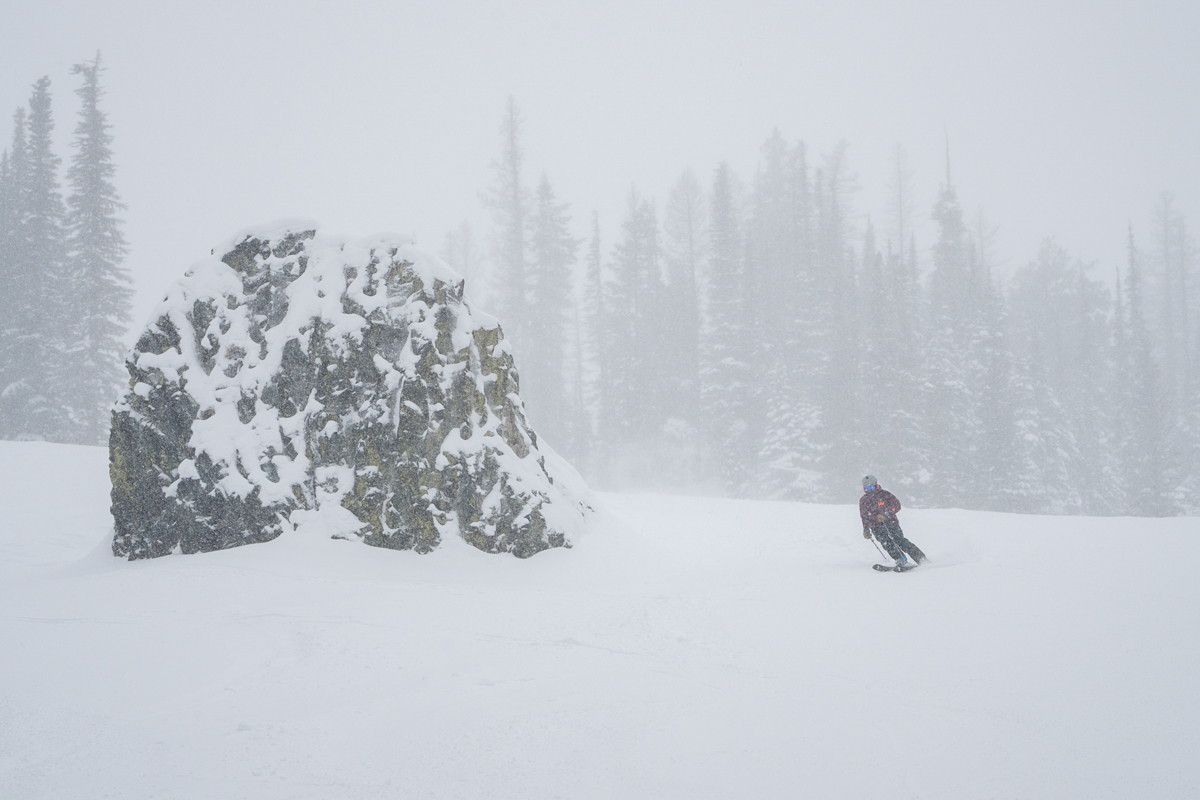
The flip side to subpar wind resistance is that the Ridge Infinity Bibs breathed better than expected. While I wouldn't recommend them as a dedicated touring companion—the thinner and more air-permeable Outdoor Research Skytour AscentShell Bibs take the cake as our favorite backcountry design—the Ridge proved plenty breathable for sidecountry hikes. To help with airflow, Helly Hansen included vents at the outside of each thigh. The zipper on the right side opens fully for easy on and off, while the vent on the left is much smaller. This wasn't a dealbreaker for me since I stuck to the resort, but making the left thigh zipper the same size as the right side would certainly improve ventilation for bootpacks and short tours.
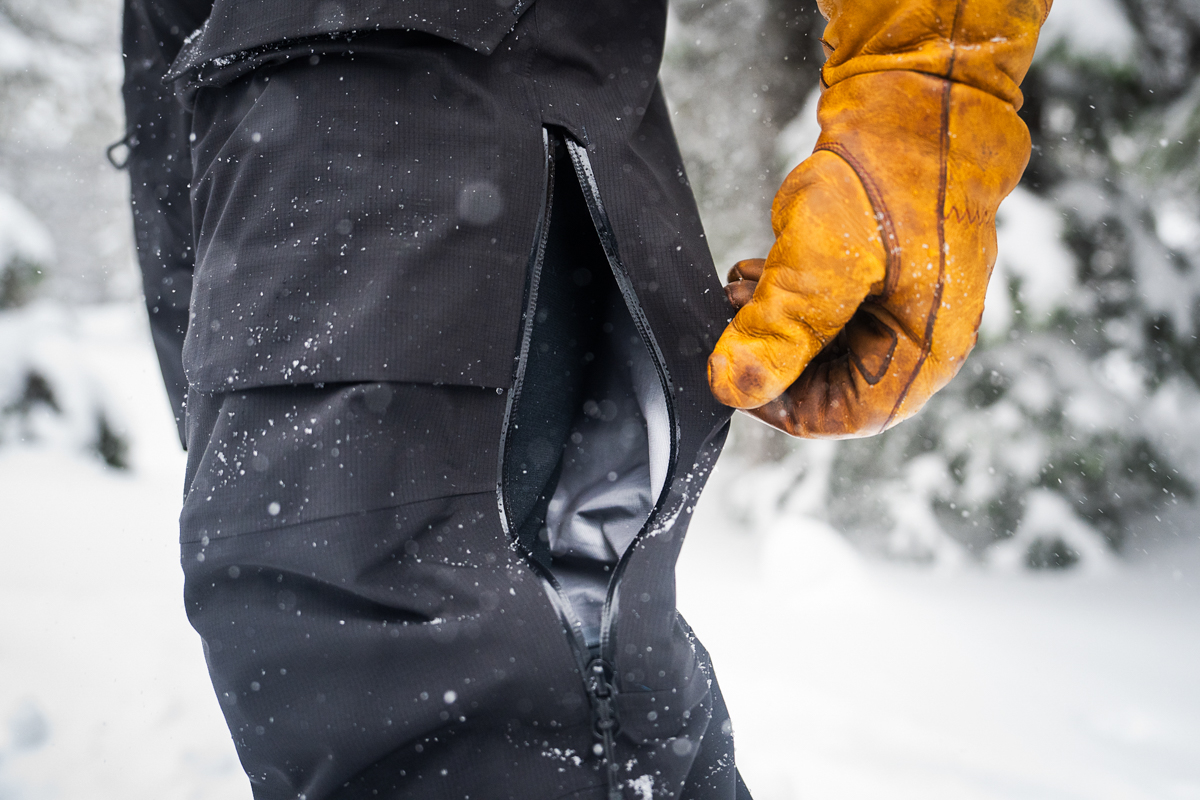
The Ridge Infinity Bibs feature 2-way mechanical stretch in the fabric, which makes them exceptionally easy to move in. The thinner construction further enhances maneuverability, while the snug fit around the chest and looser cut through the legs (complete with articulated knees) strike a nice balance between security and freedom of movement. I was particularly impressed with the suspenders, which are wide, flat, and cross comfortably at the center of my back. The straps stayed securely in place throughout full days of skiing, never loosening or slipping off my shoulders. Additionally, those who like riding with a ski backpack will appreciate the thoughtful placement of the suspenders' adjustment buckles on the back rather than at the front or on top of the shoulders, which helps eliminate potential pressure points underneath pack straps.
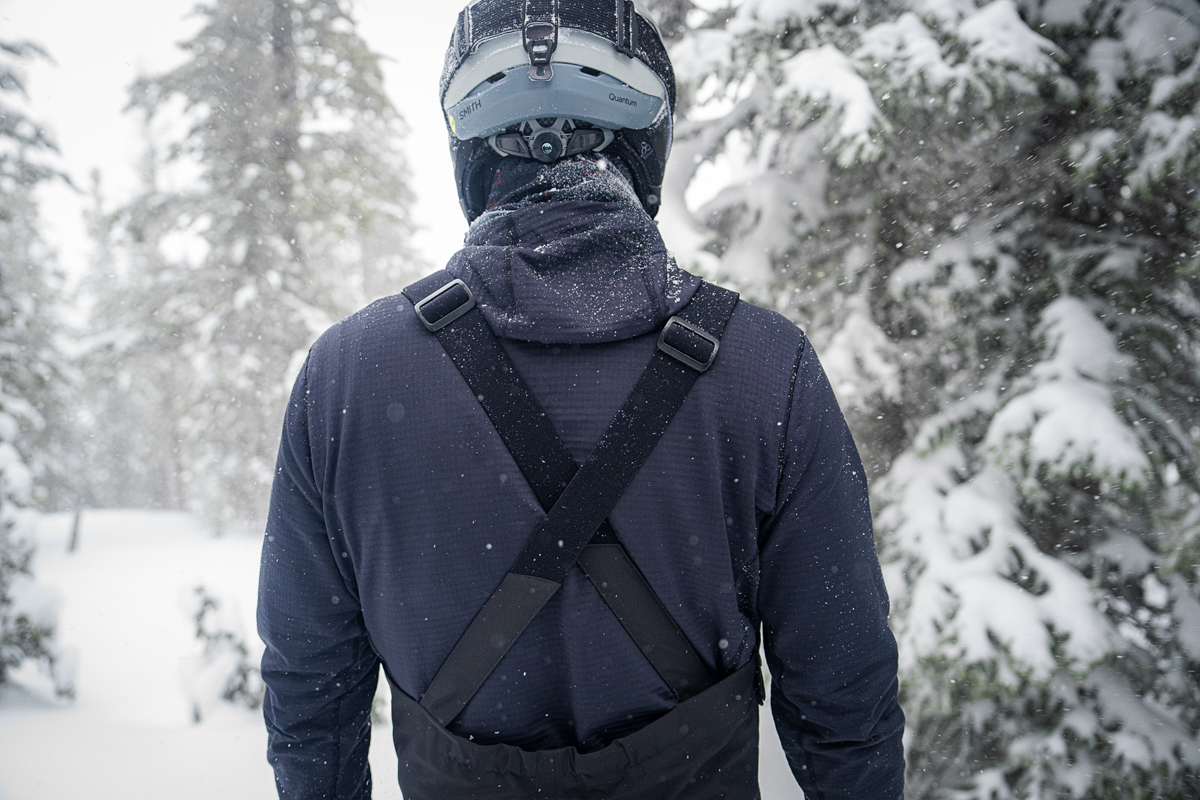
Despite their lightweight feel and relative lack of wind resistance, I found the Ridge Infinity Shell Bibs to be quite durable overall. All of the materials and components have a noticeably high-quality feel, and the bibs are showing no signs of wear after a full season of tree skiing and chairlift rides. The scuff guards at the inside of each cuff are particularly robust, providing excellent protection against sharp equipment like ski edges and ski poles. Additionally, the suspenders have maintained their elasticity throughout testing, staying secure without stretching out or losing their shape. Overall, I have no concerns about the longevity of these bibs—they feel built to last and should serve me well for many seasons to come. Finally, while entirely subjective, I love the bibs' classy styling and subtle branding—there's a logo on the chest that's barely noticeable unless in direct sunlight and a smaller logo on the lower right leg.
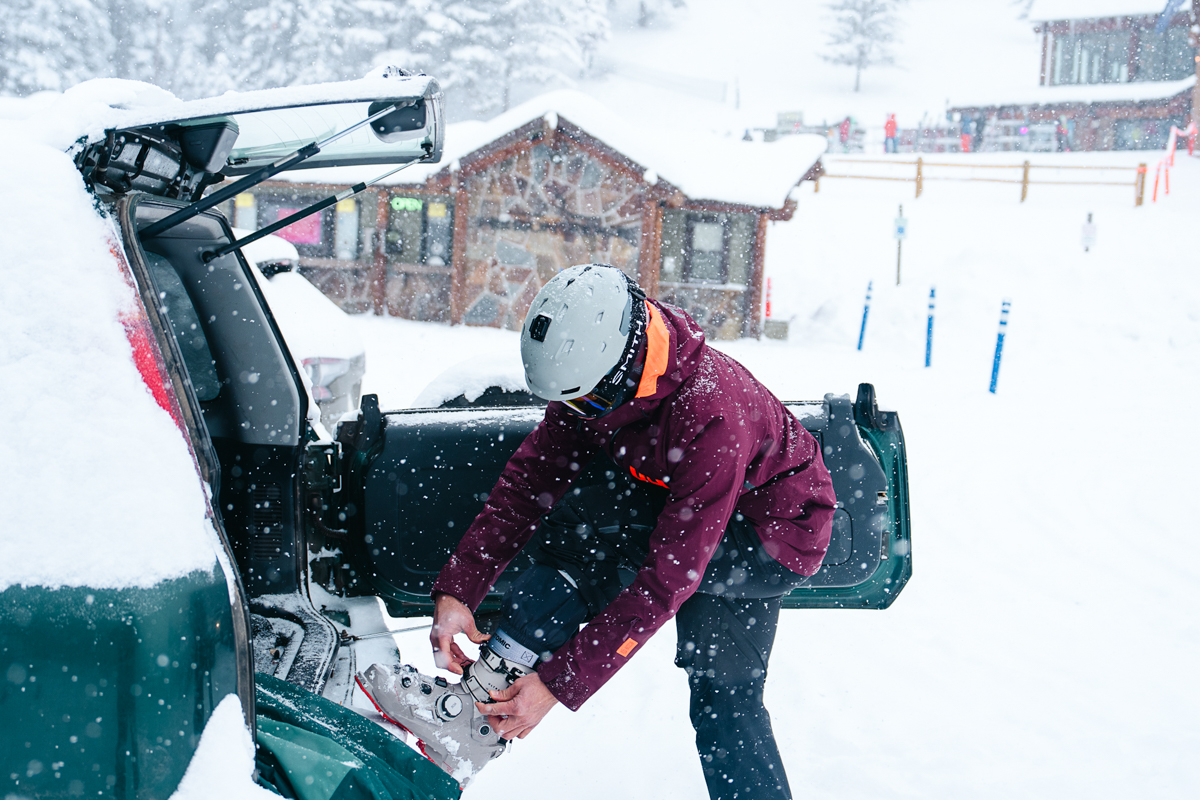
Weighing in at 1 pound 9 ounces, the Ridge Infinity Shell Bibs are relatively lightweight for a resort-focused design. For comparison, our favorite overall pick this year is Flylow Gear's Baker Bib, which tips the scales at just over 2 pounds, while the backcountry-ready Outdoor Research Skytour Bibs check in at a similar 1 pound 9.9 ounces. The Ridge Infinity Bibs' lighter weight and thinner fabric also make them fairly packable. While the limited ventilation prevents them from being a top choice for extended backcountry missions, I consider them entirely serviceable for short tours, yo-yo laps, and bootpacks into the sidecountry.
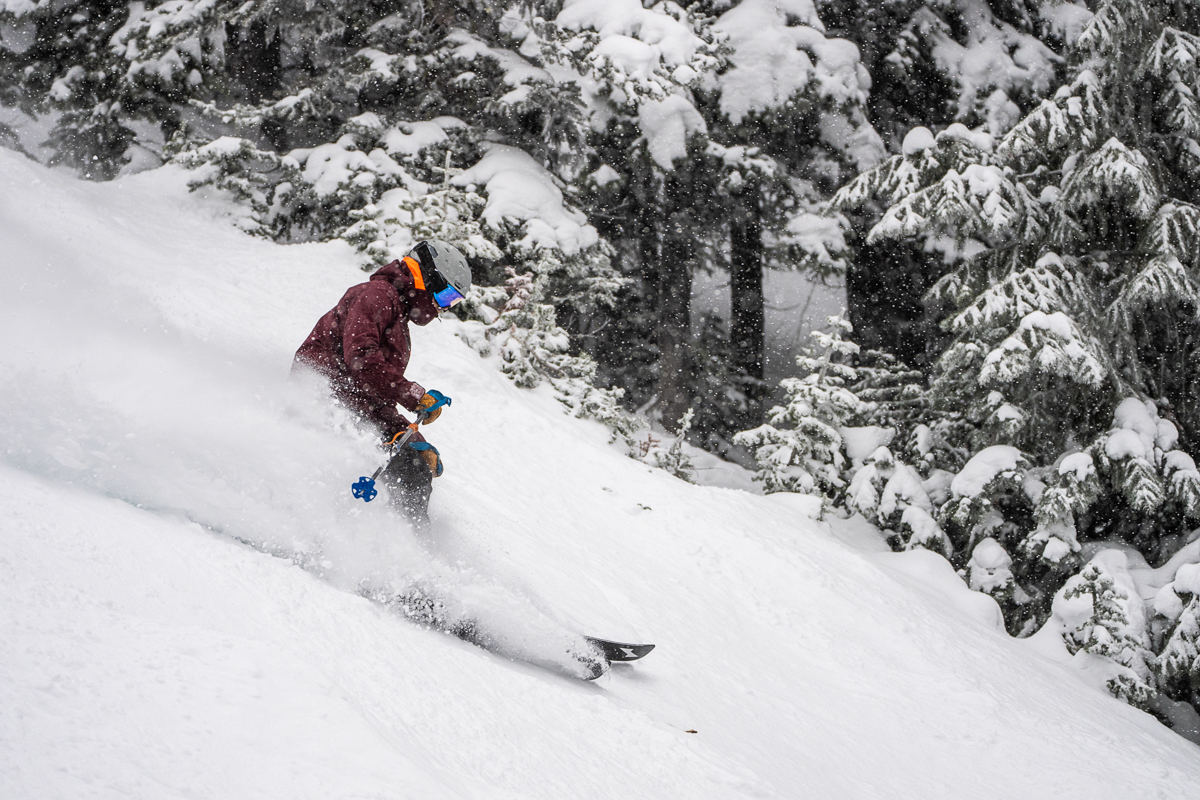
The Ridge Infinity Bibs feature three pockets in total: one zippered pocket on the right thigh, a cargo-style pocket with a Velcro closure on the left thigh, and a pass-through pocket with dual zippers at the chest. While not a standout in terms of storage, I found the layout to be entirely functional for resort use. I did find myself wishing for a more traditional horizontal zipper for the chest pocket—the vertical zippers don't inspire confidence when quickly stashing valuables—but I haven't had any issues with items falling out in testing. Further, as I mentioned, the flap-equipped cargo pocket seems more susceptible to moisture than the zippered pocket at the opposite side, but all of my belongings have stayed dry thus far.
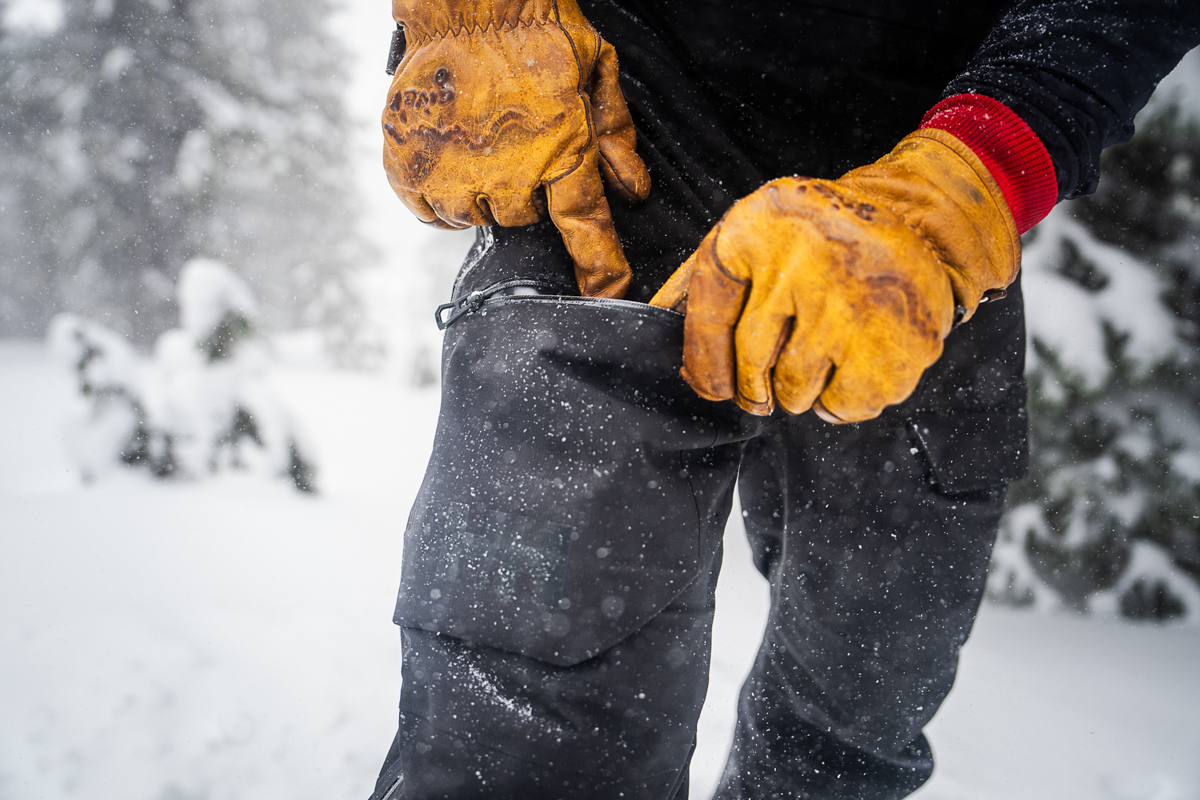
Truth be told, I experienced a bit of a learning curve when pulling on the Ridge Infinity Bibs for the first time. The biggest issue has to do with the suspender design, which connects to the front of the bibs and can make getting in and out tricky when the right vent is fully unzipped. I also found the front fly to be a bit of a letdown due to its small size. This makes bathroom breaks more challenging than they need to be, especially when trying to maneuver through a baselayer. Considering the premium price point of these bibs, I expected a slightly more refined fit and finish.
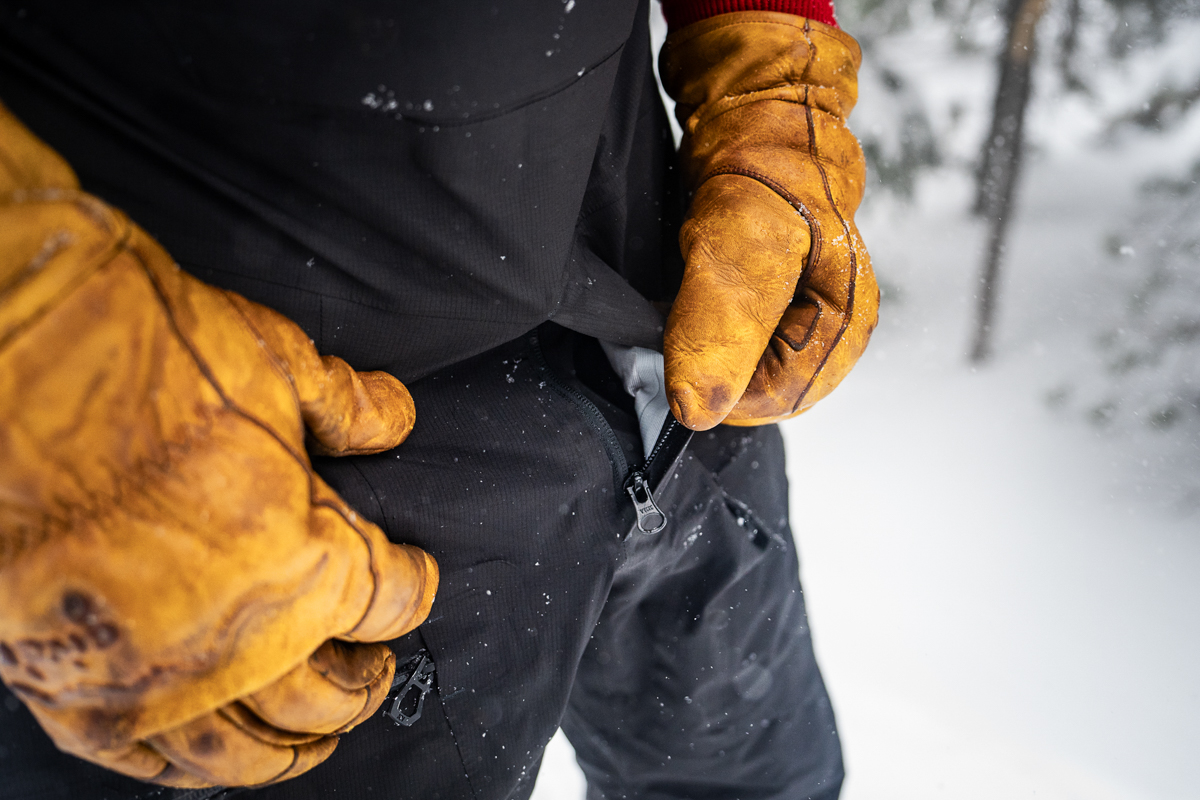
The Ridge Infinity Bibs come equipped with a Recco reflector, which is a passive device that transmits your location to search and rescue personnel (like ski patrol). While this feature wasn’t top of mind for me on resort days, even when ducking ropes, it’s nevertheless a reassuring addition for inbounds emergencies. That said, it’s important to note that Recco is not a substitute for proper avalanche safety gear (e.g., beacon, shovel, and probe) when venturing into the backcountry. For a full breakdown of what we bring on out-of-bounds adventures, check out our detailed Backcountry Skiing Checklist.
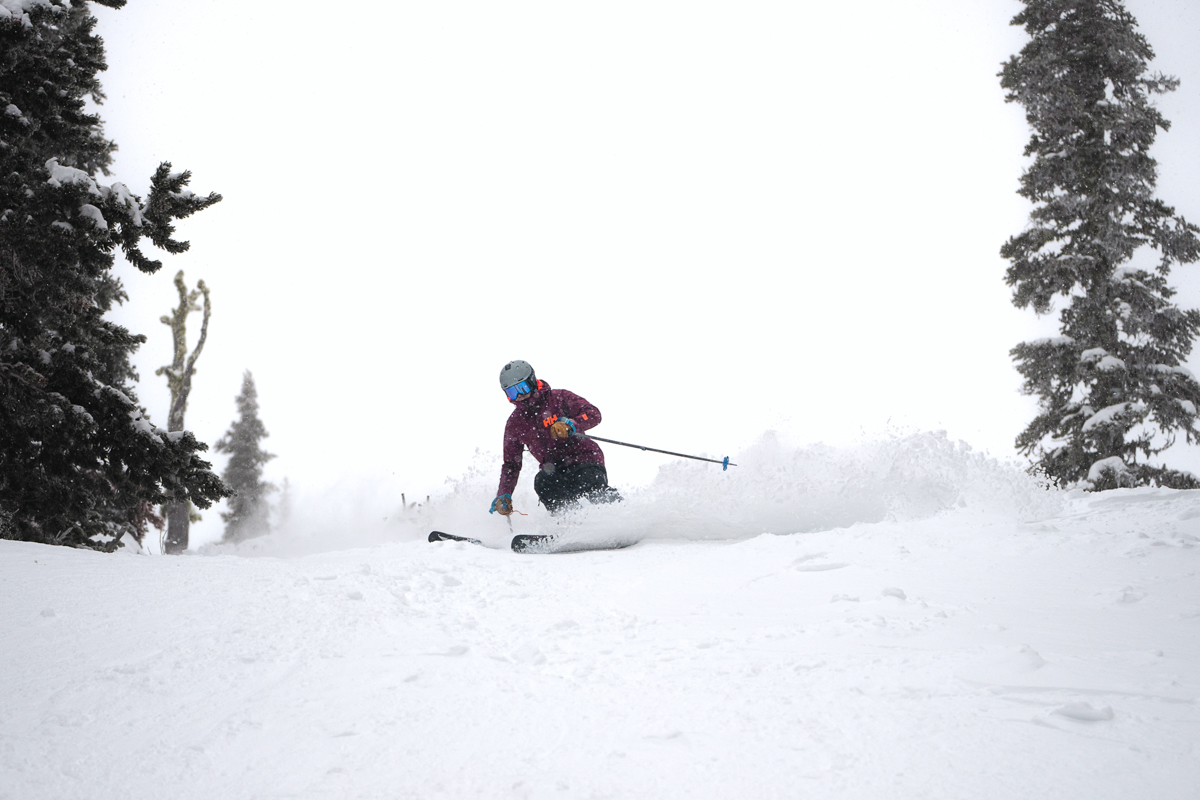
As I mentioned earlier, I’m a big fan of the Ridge Infinity Bibs' freeride-oriented fit. The front half fits snugly around the chest, while the legs are looser, offering both style points and excellent freedom of movement. I tested a men’s size medium (for reference, I’m 5'11" and weigh 165 lb.) and found the fit to be spot-on with plenty of room to accommodate layering underneath. The cuffs extend over the top of my boots without being excessively long, with a wide flare at the bottom that minimizes restriction. As I covered above, the bibs can be tricky to get on due to the suspender design, but I was very pleased with their overall fit once I got them on.
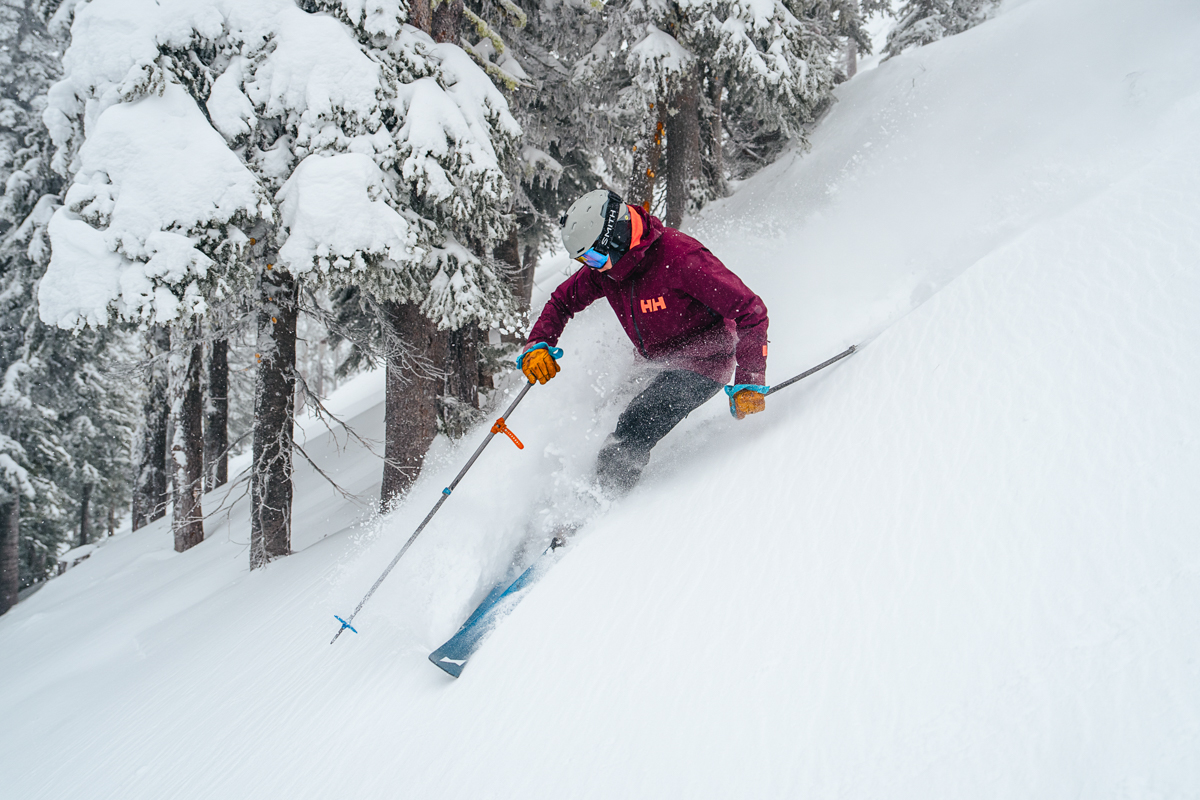
The outdoor industry has seen a strong sustainability push in recent years, and we're happy to see that Helly Hansen is on board. In this case, the Ridge Infinity Bibs are constructed with 54%-recycled polyester and boast a PFAS-free DWR coating that forgoes the use of harmful per- and polyfluoroalkyl substances. These "forever chemicals" are notorious for their inability to break down over time, and many states are stepping up to ban PFAS given their negative impact on the environment and human health. We'd love to see Helly Hansen make further improvements in the form of bluesign-approved materials and a Fair Trade certification in a future update, but we nevertheless appreciate their ongoing sustainability efforts.
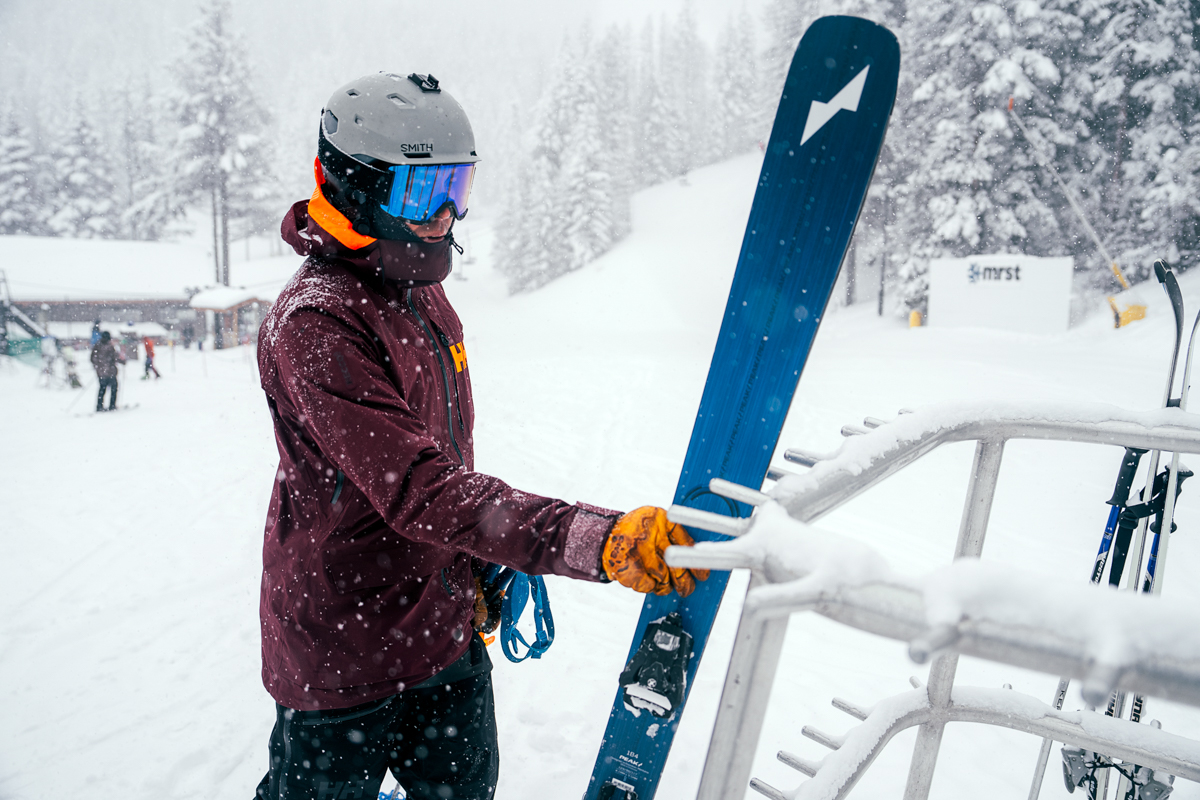
I covered the men’s Ridge Infinity Bibs for this review, and it's also available in a matching jacket under the same name. For reference, I tested the jacket and bibs side by side last season and found that both delivered reliable protection alongside great durability. The jacket fended off wind better than the bibs, which is likely due to a thicker construction, although it's hard to say for sure since Helly Hansen does not publish a denier specification (a measurement of fabric thickness) for either piece. Rounding out the collection, the Ridge Infinity Shell Pants retail for $500 and share a largely identical construction to the bibs, albeit with less coverage and no suspenders.
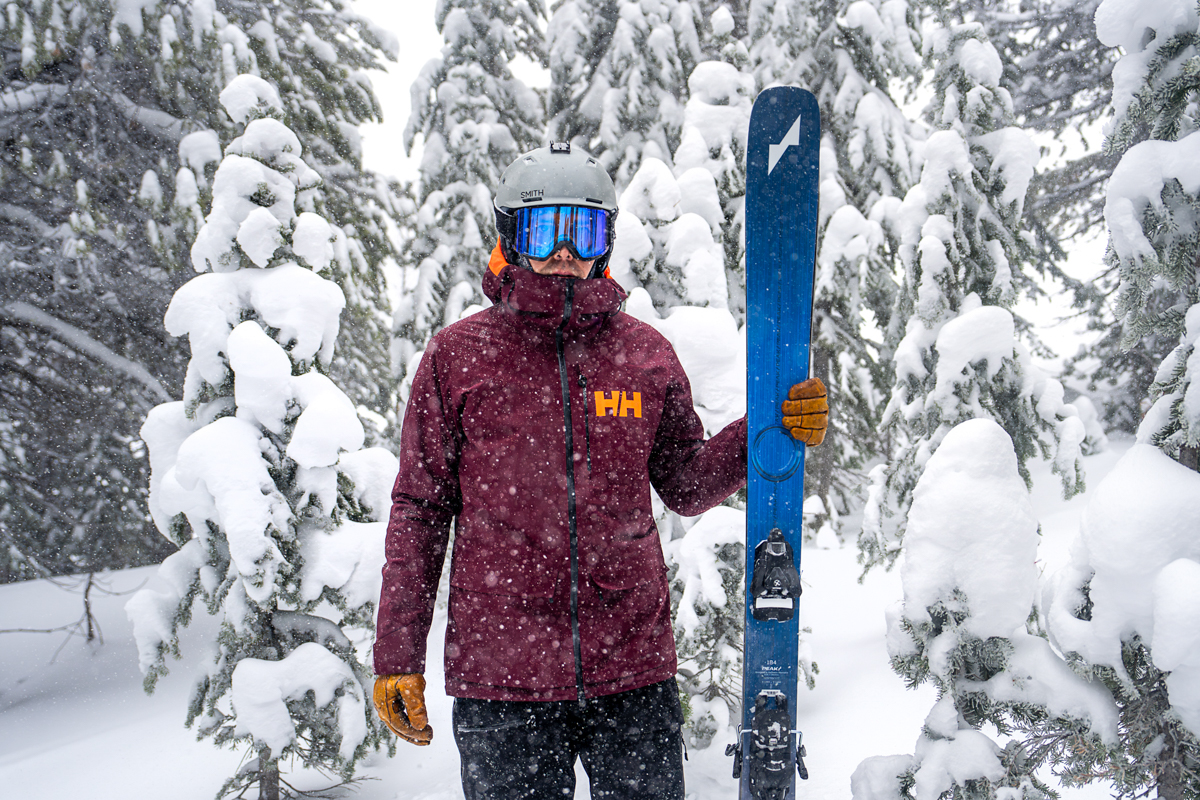
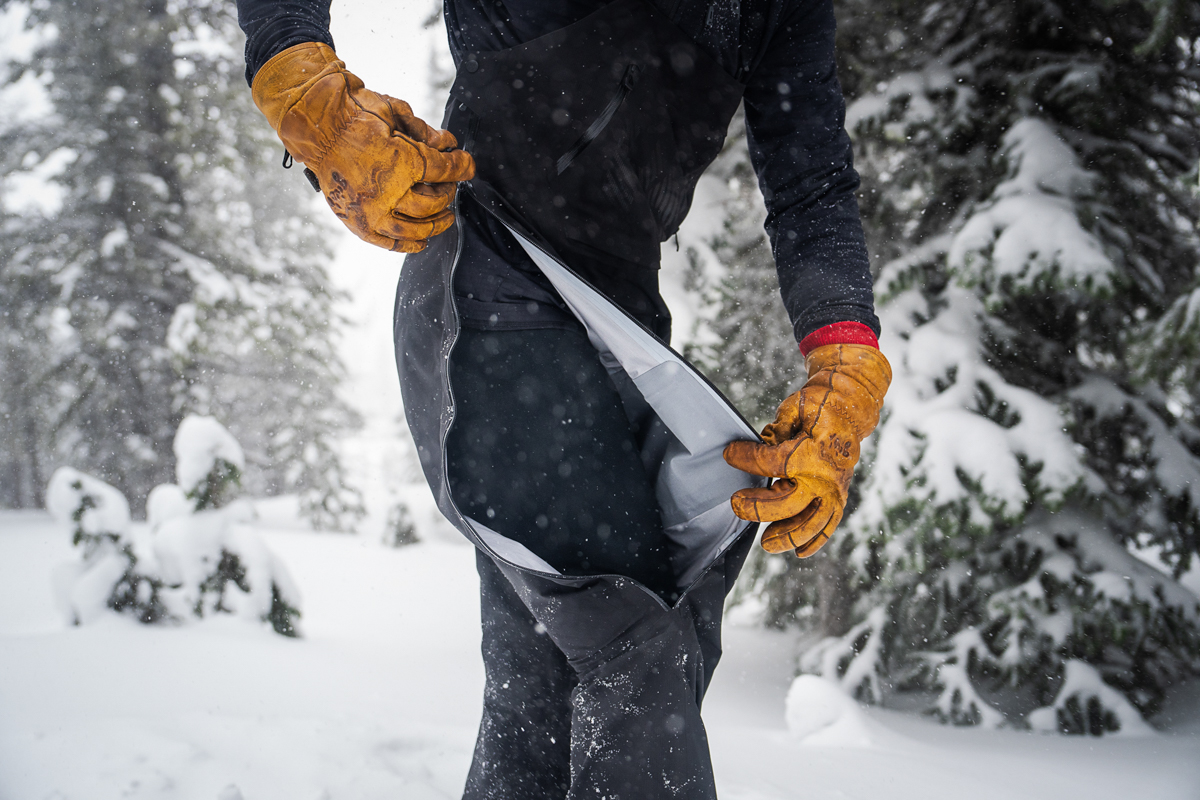
| Ski Bibs | Price | Best for | Waterproofing | Weight | Pockets |
|---|---|---|---|---|---|
| Helly Hansen Ridge Infinity | $600 | Resort/backcountry | 3L Helly Tech Pro | 1 lb. 9.0 oz. | 3 |
| Flylow Gear Baker Bib | $430 | Resort | 3L Surface | 2 lb. 1.6 oz. | 7 |
| Outdoor Research Skytour | $429 | Backcountry | 3L AscentShell | 1 lb. 9.9 oz. | 4 |
| Arc'teryx Sabre Bib Pant | $700 | Resort/backcountry | 3L Gore-Tex ePE | 1 lb. 9.6 oz. | 3 |
| Trew Gear Trewth Bib Classic | $459 | Resort/backcountry | 3L PNW Classic | 1 lb. 14.7 oz. | 7 |
The Helly Hansen Ridge Infinity is a premium ski bib that crosses over well for mixed resort and backcountry use, but it doesn't come cheap at $600. For a considerable $170 less, Flylow Gear's Baker Bib tops our rankings this year for its class-leading durability and protection in a stylish package. For waterproofing, Flylow went with their 3-layer Surface construction, which we found to be reliably protective and hardwearing in testing. You also get upgraded storage with seven total pockets (compared to the Ridge Infinity's three), although weight goes up to a fairly hefty 2 pounds 1.6 ounces. Combined with the Flylow's roomy, freeride style, we consider the Helly Hansen to be the better backcountry option, but the Flylow does include massive side vents and zippered openings along the inner thigh, which allow you to dump heat on spring days or during the odd bootpack to access sidecountry terrain. In the end, a final decision will come down to how you prioritize weight and breathability (the Ridge Infinity wins out) versus price and durability (the Baker gets the edge).
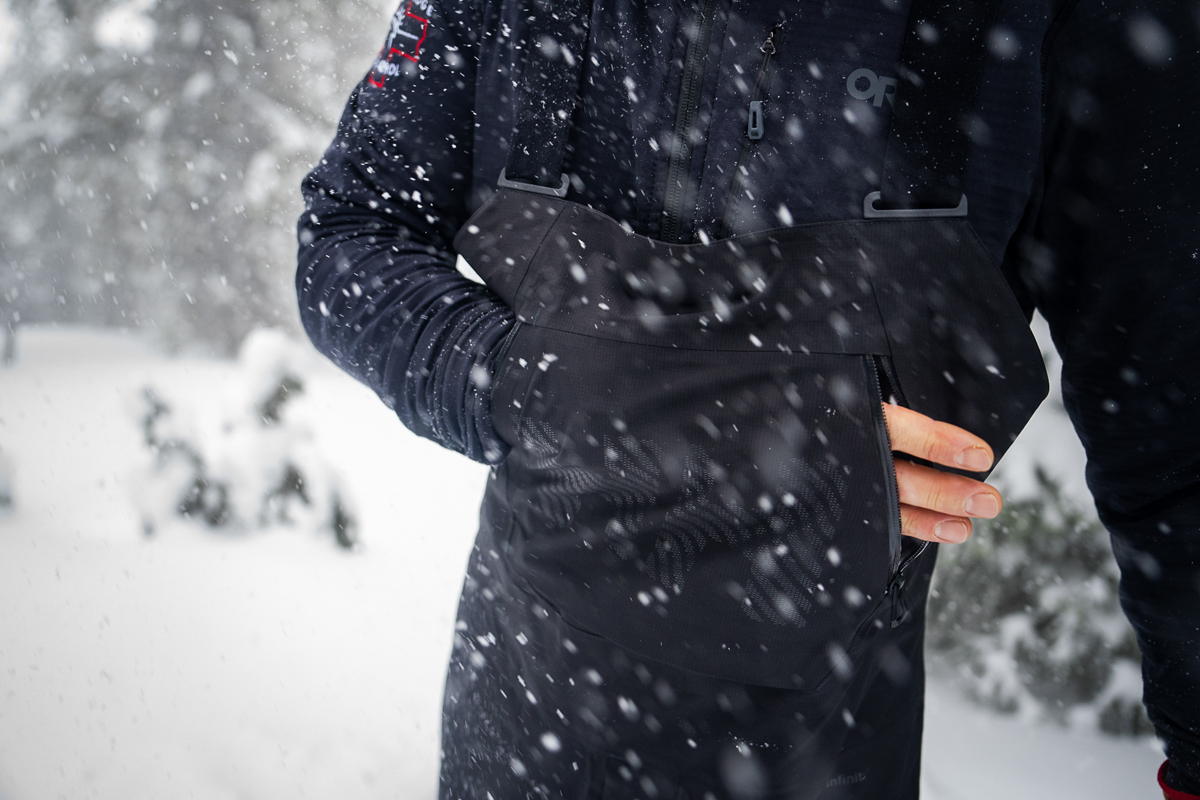
Transitioning to a more backcountry-ready design, Outdoor Research’s Skytour AscentShell is hard to beat on heart-pumping objectives. Featuring a hybrid-mapped construction, the Skytour smartly patterns OR's AscentShell fabric along the legs with a stretch-woven softshell bib upper, resulting in a best-of-both worlds combination of protection, breathability, and comfort. Other advantages include price and storage, with the Skytour checking in around $170 less than the Ridge Infinity and boasting an additional pocket. The biggest trade-offs are wind resistance and durability: The OR uses relatively thin materials that are noticeably air-permeable and not all that confidence-inspiring around sharp equipment. It also forgoes a fit adjustment around the torso, which may pose issues for some (our tester experienced a fair amount of gaping at the middle back). Given these drawbacks, we think the Ridge Infinity is the better crossover option for those who split their time in- and out-of-bounds.
Arc'teryx gear earns consistently high marks in quality and attention to detail, and we'd be remiss not to include a comparison to their Sabre Bib Pant here. Right off the bat, we'll note that the two designs share a lot in common: Both the Ridge Infinity and Sabre feature three-pocket layouts, are reliably protective in wet weather with quality 3-layer constructions (the Sabre uses a proven Gore-Tex membrane), and cross over nicely between the resort and backcountry. Weight is also similar, with the Sabre checking in less than an ounce heavier than the Ridge Infinity. Our biggest gripes are price and fit: The Sabre costs a considerable $100 more than the Helly Hansen without enough to show for it, and our tester wasn't impressed by the short inseam and rise and baggy torso. Both are great quiver-of-one options for those who spend time both inside and outside the ropes, but we think the Ridge Infinity is the better overall value.
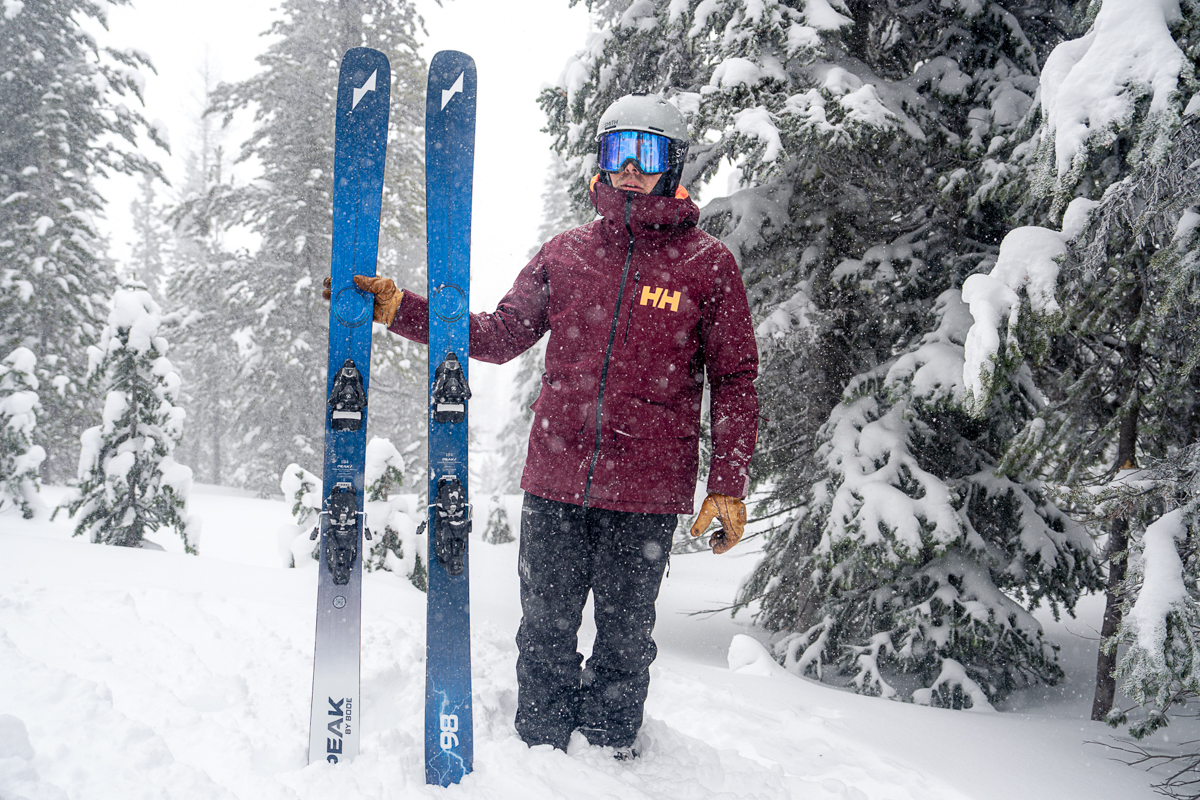
A final alternative to consider is Trew Gear's Trewth Bib Classic. The proprietary 3-layer PNW construction is reminiscent of premium Gore-Tex in both look and feel, and you get full seam taping with reinforcements, smooth-operating water-resistant zippers, and bomber coverage that keeps even the wettest of snow at bay. The Trewth also boasts a very high-quality fit and finish and generous side vents that run from knee to chest, making it appealing for both resort and backcountry use. It's considerably heavier than the Ridge Infinity at 1 pound 14.7 ounces and has a bulkier look to boot, although the advantages are improved storage and better protection against strong gusts. In the end, we'd break it down as follows: The Helly Hansen is the better pick for those who spend more days in the backcountry than they do inbounds, while the Trew Gear gets our vote for resort riders who like to earn their turns on occasion.
If you’re thinking about buying gear that we’ve reviewed on Switchback Travel, you can help support us in the process. Just click on any of the seller links above, and if you make a purchase, we receive a small percentage of the transaction. The cost of the product is the same to you but this helps us continue to test and write about outdoor gear. Thanks and we appreciate your support!
Depending on the seller, most products ship free in the United States on orders of $50 or more. International shipping availability and rates vary by seller. The pricing information on this page is updated hourly but we are not responsible for inaccuracies.